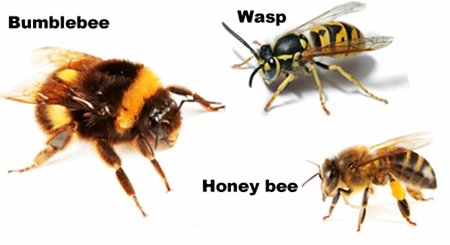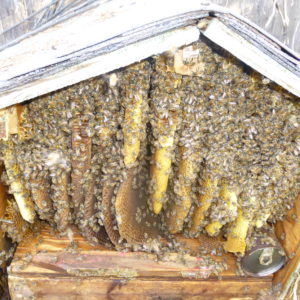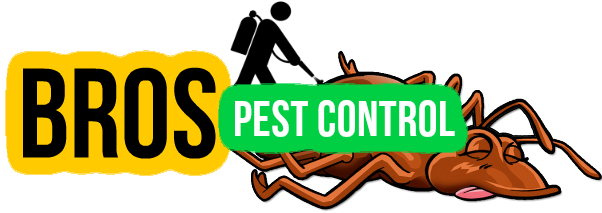Bee Removal Charleston, SC | Yellow Jackets, Wasps, Hornets
Charleston Bee Control & Extermination
 Bro’s Pest Control specializes in bee removal Charleston, SC. Bro’s Pest Control is your connection to safe bee removal and extermination services in the Charleston area. Exterminators within our network specialize in: wasp control, hornet control, bee swarm removal and bee removal. Pest control services can also include sealing off the entrances and exits, repairs from hive and damage, as well as traps. Bee’s can pose danger, especially if a loved one is allergic. Contact Bro’s Pest Control today to control your bee problem in the Charleston area.
Bro’s Pest Control specializes in bee removal Charleston, SC. Bro’s Pest Control is your connection to safe bee removal and extermination services in the Charleston area. Exterminators within our network specialize in: wasp control, hornet control, bee swarm removal and bee removal. Pest control services can also include sealing off the entrances and exits, repairs from hive and damage, as well as traps. Bee’s can pose danger, especially if a loved one is allergic. Contact Bro’s Pest Control today to control your bee problem in the Charleston area.
For Bee Control Charleston, South Carolina Call, 1-888-497-9069
Specialized Bee Removal & Extermination
Bro’s Pest Control professionals can help you with all different bee problems including:
 Removal of hives, bee swarm removal, yellow jacket removal, hornet removal, bumble bee removal and various of bee removal jobs. Bee removal Charleston, SC experts will come out to your home or business and remove unwanted bee’s safely and at a reasonable price. Same day appointments for bee removal can be scheduled, if needed. Ready for bee control Charleston, SC? Contact us today by calling 1-888-497-9069.
Removal of hives, bee swarm removal, yellow jacket removal, hornet removal, bumble bee removal and various of bee removal jobs. Bee removal Charleston, SC experts will come out to your home or business and remove unwanted bee’s safely and at a reasonable price. Same day appointments for bee removal can be scheduled, if needed. Ready for bee control Charleston, SC? Contact us today by calling 1-888-497-9069.
Bee, Wasp & Hornet Treatment
 Bee, wasp or hornet treatment Charleston, SC will require one of our bee specialists to come out to your home to perform a free inspection. They will arrive fully equipped to eliminate your bee issue. The bee exterminator will identify the location of the nest, depending on the type of stinging insect problem you have, and eliminate/remove the problems to protect your family’s health and safety. In the case of a hornets nest, the technician will treat the nest and return to remove it after insuring that all the pests have been killed.
Bee, wasp or hornet treatment Charleston, SC will require one of our bee specialists to come out to your home to perform a free inspection. They will arrive fully equipped to eliminate your bee issue. The bee exterminator will identify the location of the nest, depending on the type of stinging insect problem you have, and eliminate/remove the problems to protect your family’s health and safety. In the case of a hornets nest, the technician will treat the nest and return to remove it after insuring that all the pests have been killed.
Bees are flying insects closely related to wasps and ants, known for their role in pollination and, in the case of the best-known bee species, the European honey bee, for producing honey and beeswax. For bee removal Charleston, SC — contact us today!
Bee Extermination Charleston, South Carolina
 Assuming the bee's in question are not honeybee's, a Bro's Pest Control expert can exterminate them. Every year, beekeepers are called upon to give advice regarding the removal of honey bees (and other insect pests) from homes and buildings since honey bees are NOT to be exterminated. Honey Bee removal on the other hand, includes relocating the bee's to a different location. If you have a bumble bee, wasp or yellow jacket bee problem in Charleston, SC -- then extermination can be done. For wasp, bumble bee, hornet or yellow jacket extermination Charleston, SC -- please get in touch with Bro's Pest Control today!
Assuming the bee's in question are not honeybee's, a Bro's Pest Control expert can exterminate them. Every year, beekeepers are called upon to give advice regarding the removal of honey bees (and other insect pests) from homes and buildings since honey bees are NOT to be exterminated. Honey Bee removal on the other hand, includes relocating the bee's to a different location. If you have a bumble bee, wasp or yellow jacket bee problem in Charleston, SC -- then extermination can be done. For wasp, bumble bee, hornet or yellow jacket extermination Charleston, SC -- please get in touch with Bro's Pest Control today!
Charleston, South Carolina
Charleston is the oldest and second-largest city in the U.S. state of South Carolina, the county seat of Charleston County,[5] and the principal city in the Charleston–North Charleston–Summerville Metropolitan Statistical Area.[6] The city lies just south of the geographical midpoint of South Carolina's coastline and is located on Charleston Harbor, an inlet of the Atlantic Ocean formed by the confluence of the Ashley and Cooper Rivers. Charleston had an estimated population of 132,609 in 2015.[7] The population of the Charleston metropolitan area, comprising Berkeley, Charleston, and Dorchester Counties, was counted by the 2015 estimate at 727,689—the third-largest in the state—and the 78th-largest metropolitan statistical area in the United States.
Charleston was founded as Charles Town—honoring King Charles II of England—in 1670. Its initial location at Albemarle Point on the west bank of the Ashley River (now Charles Towne Landing) was abandoned in 1680 for its present site, which became the 5th-largest city in North America within 10 years. Despite its size, it remained unincorporated throughout the colonial period; its government was handled directly by the state legislature and by its Anglican parish wardens and vestries. It adopted its present spelling with its incorporation as a city in 1783 at the close of the Revolutionary War. Endemic bouts of yellow fever and malaria influenced the removal of the state government to Columbia in 1788, although the port remained among the 10 largest cities in the United States through the 1840 census.[8] The only major American city to have a majority-enslaved population, Antebellum Charleston was controlled by a militarized oligarchy of white planters and merchants who successfully forced the federal government to revise its 1828 and 1832 tariffs during the Nullification Crisis and launched the Civil War by seizing the Arsenal, Castle Pinckney, and Fort Sumter from their federal garrisons. The Confederates burned the town prior to its evacuation but continued demand for the area's cotton and rice, along with growing industry and a large military presence, saw it through Reconstruction.
The western honey bee or European honey bee (Apis mellifera) is the most common of the 7–12 species of honey bee worldwide.[1][2] The genus name Apis is Latin for "bee", and mellifera means "honey-bearing", referring to the species' tendency to produce a large quantity of honey for storage over the winter.
Like all honey bees, the western honey bee is eusocial, creating colonies with a single fertile female (or "queen"), many sterile females or "workers," and small proportion of fertile males or "drones." Individual colonies can house tens of thousands of bees. Colony activities are organized by complex communication between individuals, through both odors and the dance language.
